*This post provides live updates from ESA’s Main Control Room in Darmstadt, Germany, as engineers and operators guide Aeolus home. New updates will be added at the top of the page, so check back daily for the latest.*
Bye Bye Aeolus – a historic end to a trailblazing mission
29 July 2023, 08:40 CEST
Confirmed in the early hours this morning, Aeolus reentered Earth’s atmosphere on 28 July at around 21:00 CEST above Antarctica, confirmed by US Space Command.
The reentry comes after a series of complex manoeuvres that lowered Aeolus’ orbit from an altitude of 320 km to just 120 km to reenter the atmosphere and burn up.
Crucially, these manoeuvres – the first assisted reentry of its kind – positioned Aeolus so that any pieces that may not have burned up in the atmosphere would fall within the satellite’s planned Atlantic ground tracks.
Our teams of engineers, space debris and flight dynamics experts, well they pulled it off – Aeolus has reentered in line with current regulations.
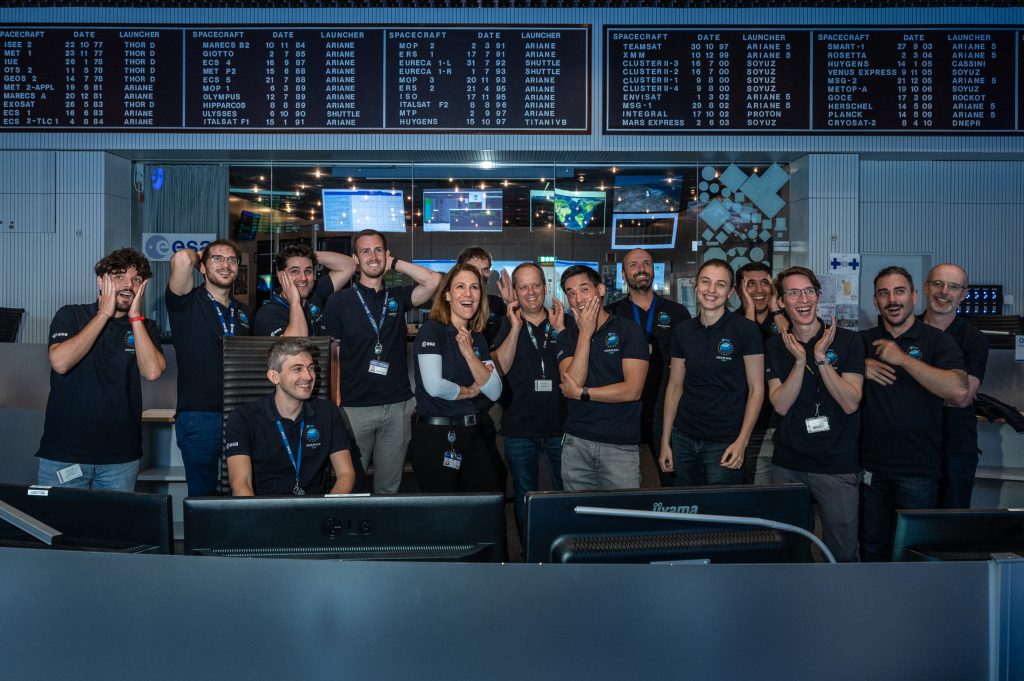
Day 5: catch up on Phase II, final GO/NO-GO checkpoint for Phase III
28 July 2023, 23:34 CEST
We expect the final confirmation from international partners on the precise timing and location of Aeolus’s reentry in the next few hours. But as teams now head home to dream about today’s events, we’ll provide a full update in the morning.
Good night!
28 July 2023, 21:03 CEST
According to our calculations, Aeolus should now have reentered Earth’s atmosphere. Our Earth Observer, became a shooting star. Now we wait for confirmation from our partners with information on the exact time and location of entry.
28 July 2023, 18:44 CEST
Data from the TIRA radar has been analysed, and shows that Aeolus was found almost exactly where it was expected, confirming a successful final manoeuvre.
How do we know? The first sign was a round of applause that rang out in the Briefing Room as the news came in, after confirmation from our space debris experts.
There’s still more news to come – the night is young! For now, everything is nominal.
28 July 2023, 18:40 CEST
Aeolus has been spotted by the Fraunhofer TIRA radar in Germany. Because we ‘passivated’ the satellite, we can no longer hear directly from it, and so rely on ground observations to track out Earth Explorer.
(Passivation is when any energy onboard a spacecraft is removed, for example, its propellant or batteries. Doing this prevents explosions and fragmentation events, that could cause the release of lots of pieces of unwanted space debris.
For Aeolus, already out of fuel, it will simply be turned off.)
Our space debris experts are analysing the data that’s come in.
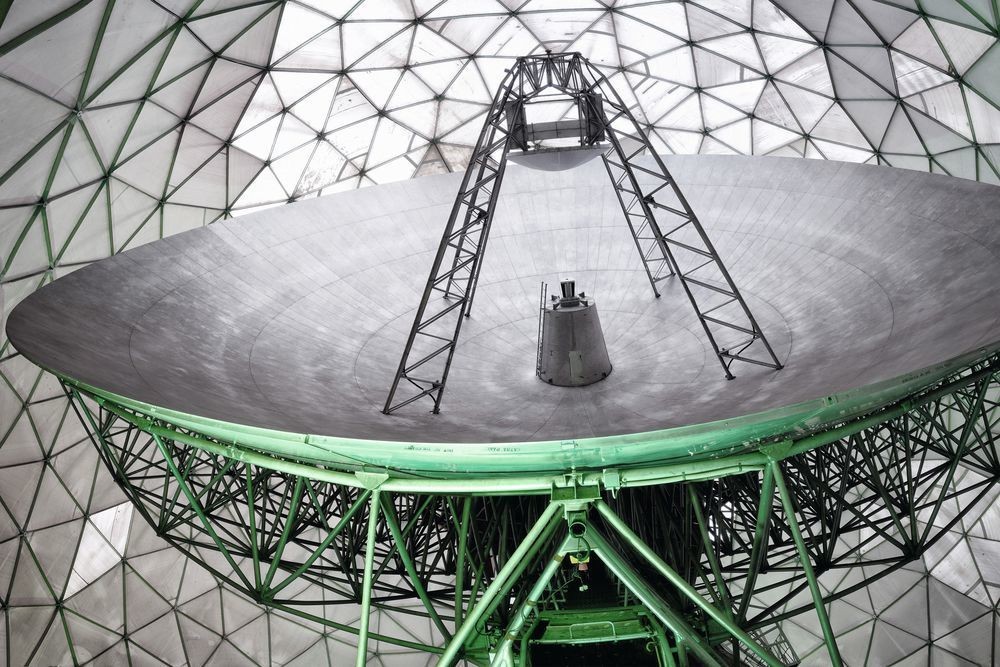
28 July 2023, 17:38 CEST
The Mission Control Team has done everything they planned, Aeolus is now out of their hands. From skilled engineers to wonderful wizards in the flight dynamics team, it’s a proud moment in the Main Control Room. They now hand over to our space debris experts.
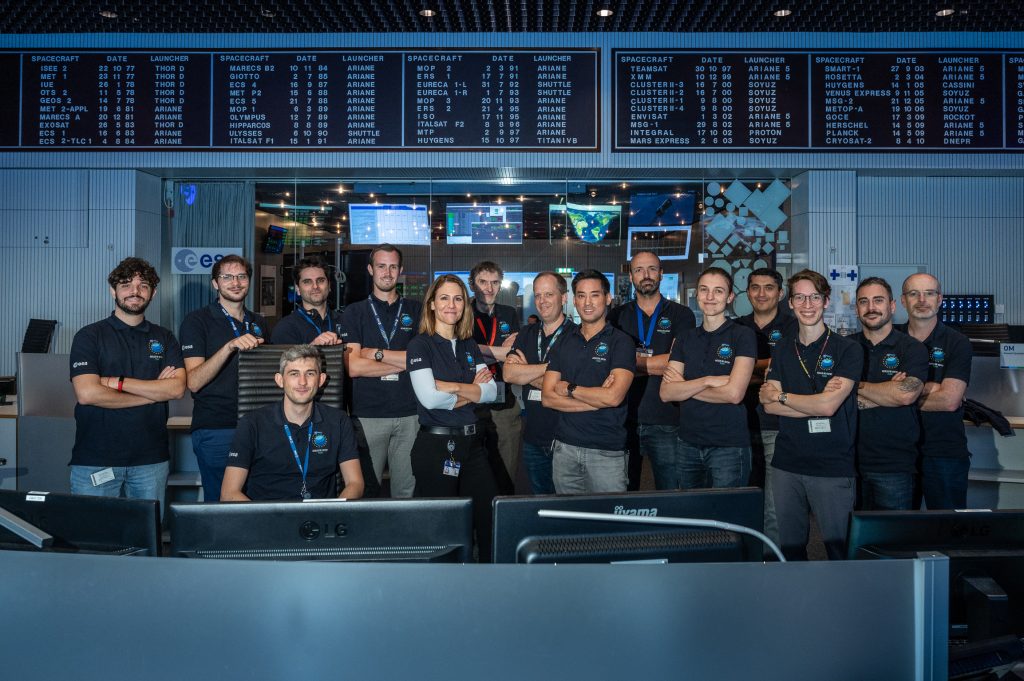
28 July 2023, 17:15 CEST
The final manoeuvre has begun.

28 July 2023, 15:57 CEST
And now, the very last words have been sent up to Aeolus, the last time it will hear the voice of ESA mission control, Earth’s final farewell.
What were they? Your standard ‘housekeeping’ data dumps. After all the drama of today, the last words Aeolus heard from Earth is the same as what it heard every day of its five years in orbit – a little ping, a little check in, and soon its on its own.
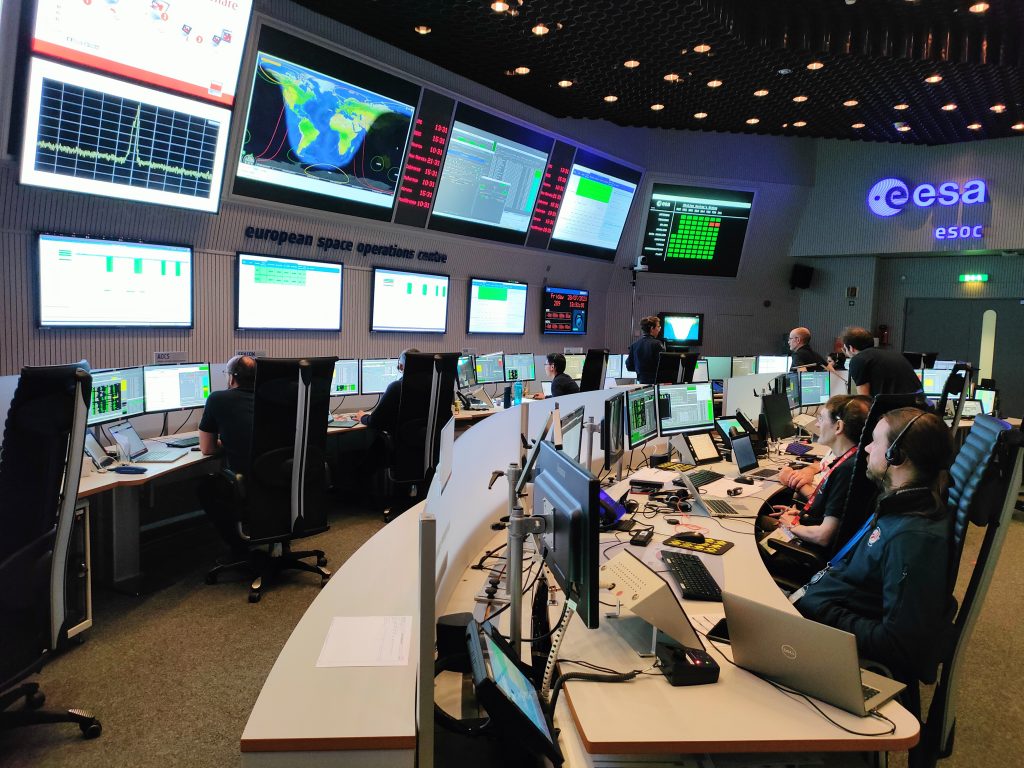
28 July 2023, 14:00 CEST
The very last commands have been beamed up to Aeolus. “OD-SOM, all commands are onboard as planned”, reported the Spacecraft Operations Manager Viet Duc Tran to Flight Director Isabel Rojo.
It was an understated sentence, for a big moment at the end of this mission.
28 July 2023, 13:43 CEST
Final checkpoint: we are GO for Phase III!
28 July 2023, 10:47 CEST
Good morning! While we slept, the Mission Control Team kept on flying.
The very good news is that all four manoeuvres of Phase II were successfully executed! They began yesterday afternoon and continued through the night and well into the early morning.
Following last night’s burns, Aeolus is already skimming the top of our atmosphere, already being buffeted by denser air – our planet’s protective shield – in a preview of what’s to come tonight. Aeolus is now sailing at an altitude below 160 km.
But, it wasn’t all smooth sailing.
There was a moment when the words “major anomaly” rang out over the voice loop, and the team came together in the Briefing Room to discuss what at first looked like an issue with the thrusters that could mean the rest of the assisted reentry attempt would have to be aborted.
The team really had to make decisions fast. “Five minutes til AOS” said Flight Operations Director Isabel Rojo, and the team got back into the Main Control Room, got back in touch with the mission, and not long later calm resumed in the ‘MCR’ and reassuring bright green lights again shone on.
What happened? Aeolus wasn’t meant to be manoeuvred at such low altitudes, and flying through this part of the atmosphere is extremely challenging. Already, the satellite is feeling the pressure.
Once this critical phase is over, there will be time to delve into what exactly happened and apply lessons to future similar assisted reentries, that could become more common as a result of this first-of-its-kind attempt.
Teams have already begun flying Aeolus in a new way, pointing the spacecraft into the oncoming ‘wind’ to keep it stable in the last hours of its pioneering life.
Preparations are now underway for the next, and final, GO/NO-GO checkpoint later, and if all is GO we look forward to the final manoeuvre.
Stay tuned.
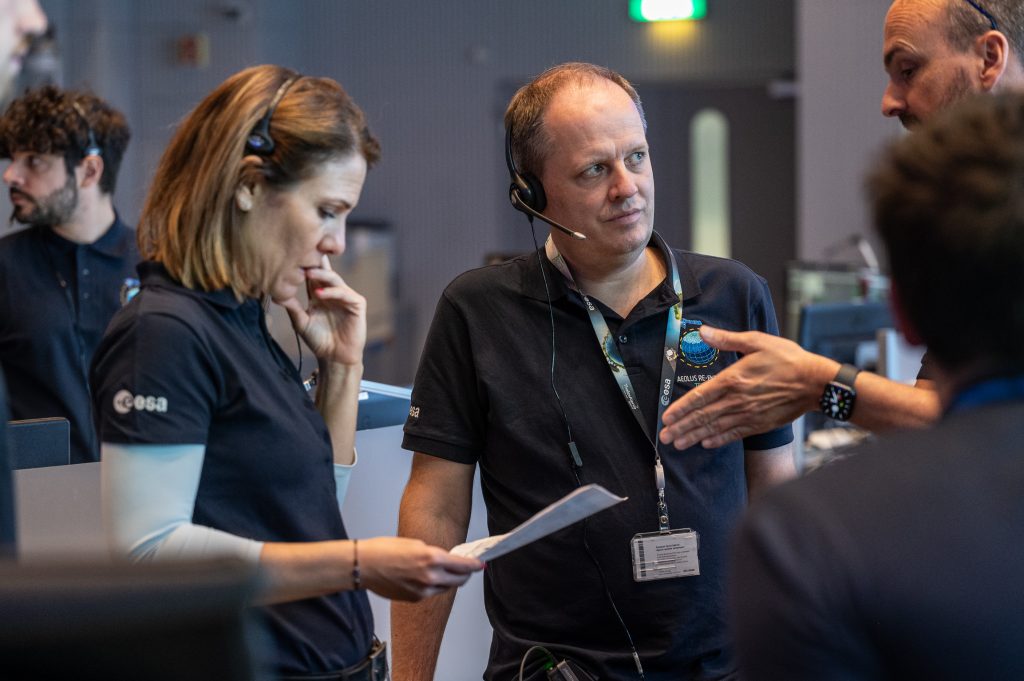
Day 4: Phase II – four manoeuvres to bring Aeolus dramatically closer to home
27 July 2023, 21:13 CEST
As Aeolus reentry manoeuvres continue into the night – and well into the early morning! – we’re signing off. Thank you for following our live coverage of this first-of-its-kind assisted reentry. Tomorrow, there’ll be the final ‘GO/NO-GO’ checkpoint as teams assess the health of the satellite.
Join us tomorrow for all the latest. Good night!
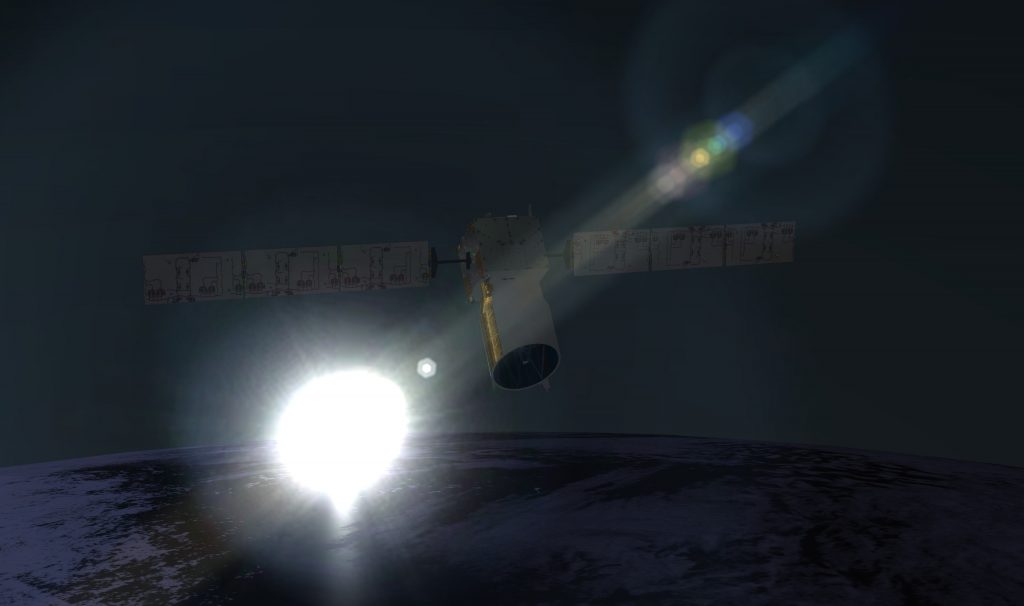
27 July 2023, 18:26 CEST
And now we have the numbers.
Manoeuvre #1/4: success!
Burn duration: 45 minutes
Fuel used: 6 kg
Aeolus altitude: from 250 to 230 km
Thanks team! On to the next…
27 July 2023, 17:38
Just in: today’s first manoeuvre was a success. More details to follow on Aeolus’s new altitude and fuel used, as the flight dynamics team assess the data that arrived via the KSAT Svalbard station in Norway.
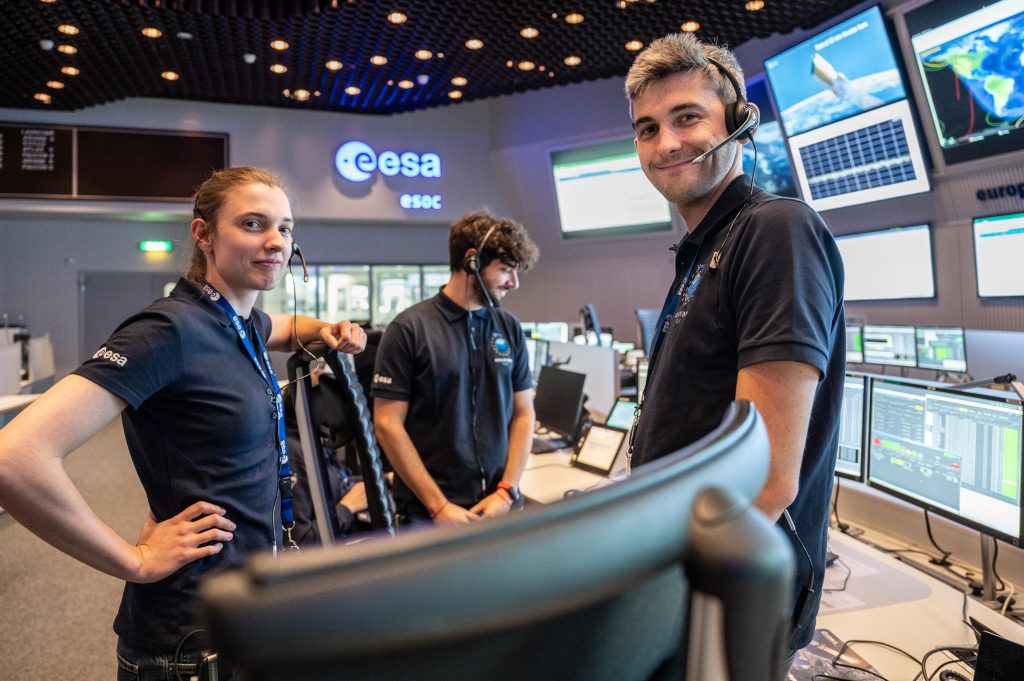
Credit: ESA/ J. Mai
27 July 2023, 11:09 CEST
We’re GO! Stay tuned for the first manoeuvre this afternoon.
27 July 2023, 10:25 CEST
At many stages throughout the reentry operations, there are “GO/NO-GO checkpoints” when the teams assess the situation and decide if it makes sense to continue.
The assisted reentry manoeuvres have been designed to come together to improve the – already very low – risk as Aeolus descends, but checkpoints are moments they could be aborted, returning Aeolus to a natural reentry.
We’re waiting this morning for the next check point, and will let you know as soon as we can if we are GO for 150 km.
Day 3: the calm before Aeolus gets warm
26 July 2023, 21:58 CEST
Like yesterday, teams have spent the day preparing for the series of manoeuvres to follow. Tomorrow, the plan is to bring Aeolus down from an altitude of 250 to 150 km: the largest fall in the shortest period since the mission was launched.
Orbiting at 150 km is very low indeed. Aeolus was not made for this. The spirit at Mission Control is determined, excited, and a little tired. This week has been a long time coming.
Join us tomorrow, for an important day.
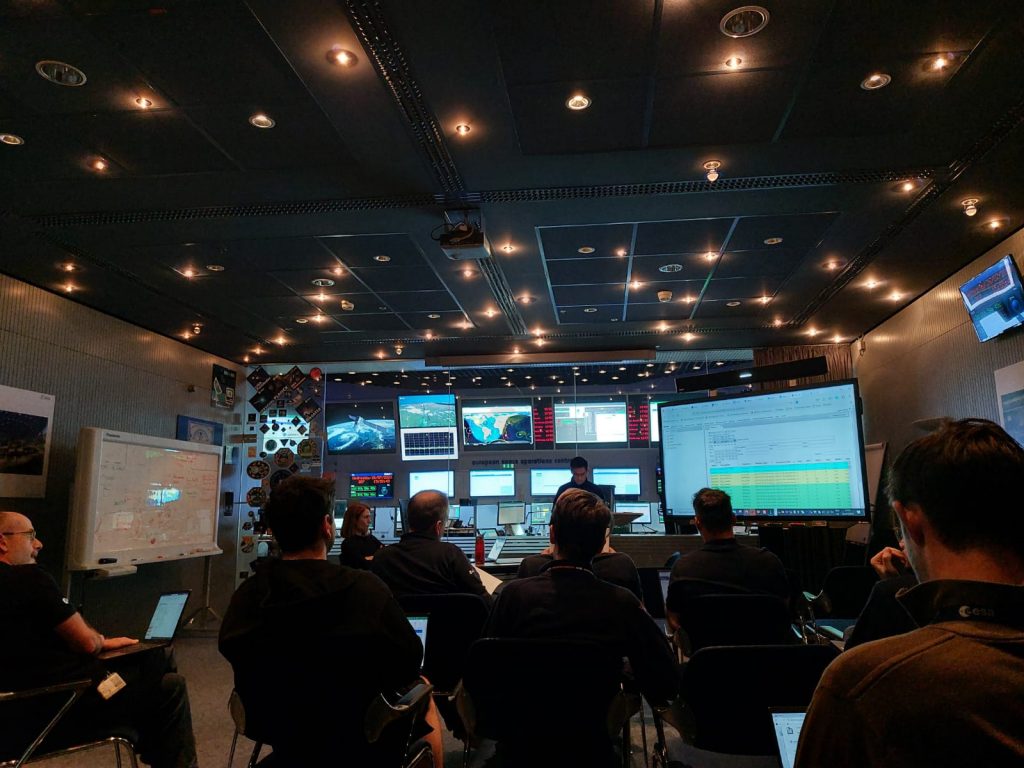
Day 2: between two manoeuvres
25 July 2023, 18:15 CEST
Two days were set aside in the operations planning, this Tuesday and Wednesday, in case anything unexpected occurred as Aeolus performed yesterday’s large, low-orbit thruster burn.
With the success of the first manoeuvres, teams at mission control have today been preparing for the next – a series of four thruster firings planned for this Thursday.
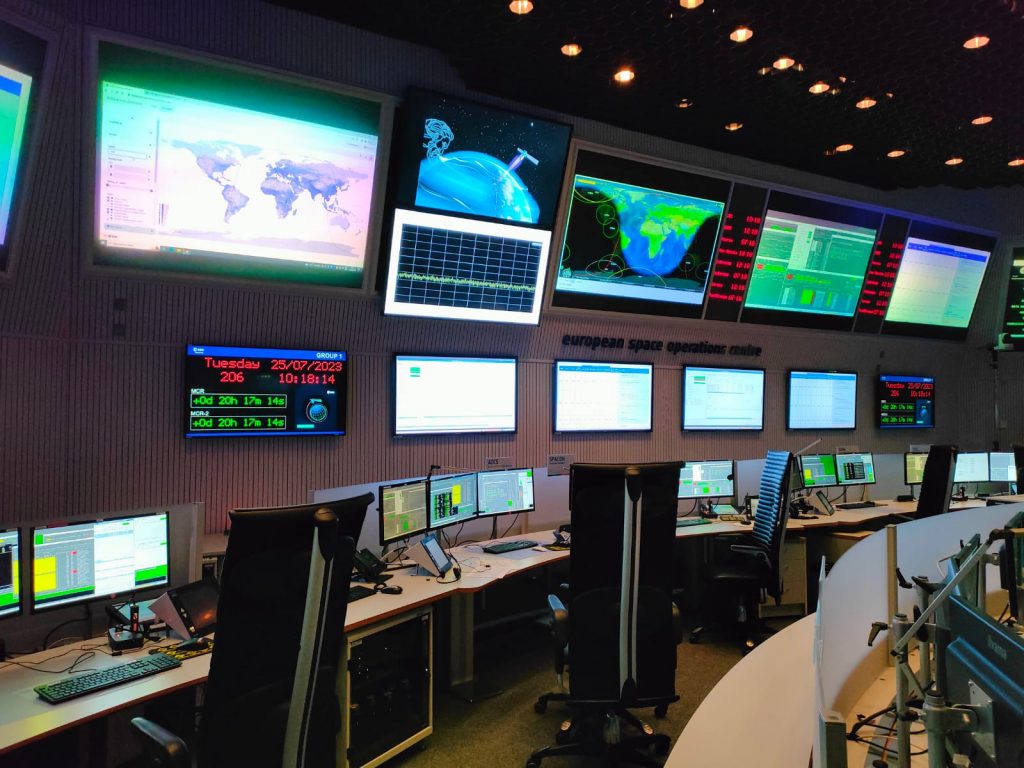
D
ay 1: Phase I – first manoeuvre tests large, low-altitude thruster firing
24 July 2023. Manoeuvre #1 successfully completed!
The first Aeolus reentry manoeuvre has been successfully performed – the largest thruster firing in the mission’s five years in orbit, and more than three times the size of those executed during routine operations.
Today’s thruster burns, one large and one small, in numbers:
Targeted altitude change: 280 down to 250 km
Total burn duration: 37 minutes 24 seconds
Total estimated fuel consumption: ~ 6 kg
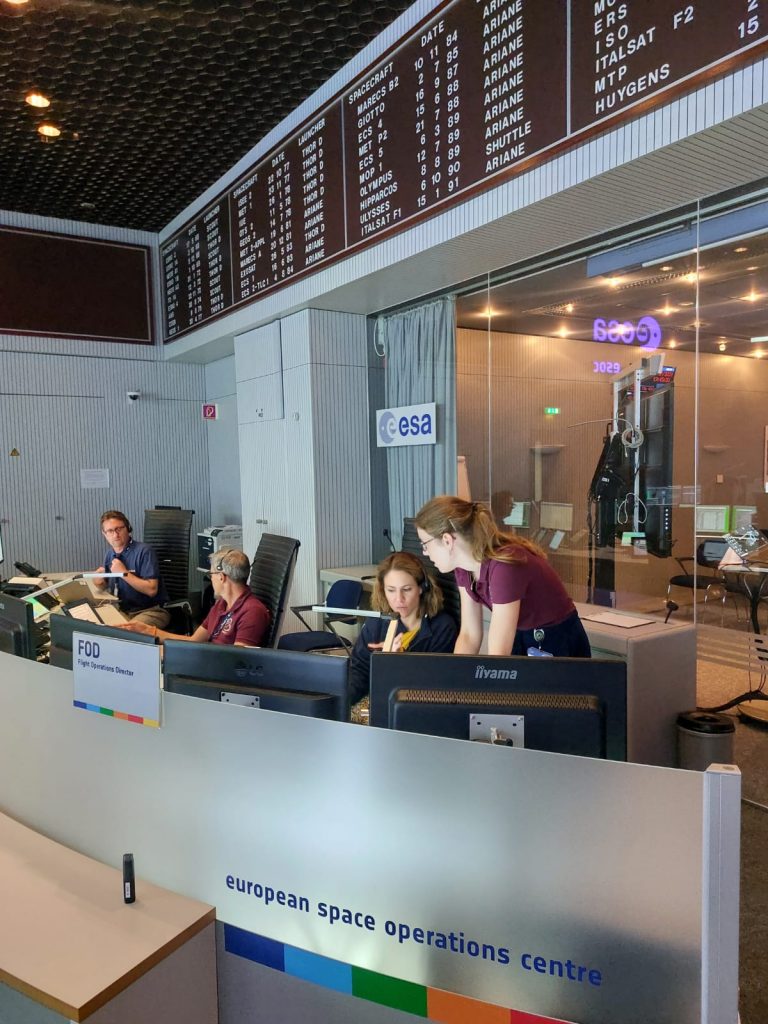
The main objectives were to lower the satellite in orbit, and check how it would behave when performing a large manoeuvre and at very low altitudes. Low-altitude operations are complex, with Earth’s atmosphere and a greater gravitational pull dragging at the satellite.
While the ultimate goal is for the spacecraft to burn up in Earth’s atmosphere during reentry, teams need to keep it functioning long enough that they can continue to send up commands and control it on its path.
Remember, Aeolus was not designed for this ending. It was ‘meant’ to naturally fall in an uncontrolled reentry – its propulsion system and fuel reserves were not designed to allow the satellite to be controlled down to the required altitudes for a fully controlled reentry.
With this campaign, ESA engineers and operators are pushing the satellite to the limits of what it can do. The success of this first manoeuvre bodes well for the rest of the campaign.
The reentry: where and when?
After completing its mission, Aeolus has been falling from its operational altitude of 320 km since 19 June.
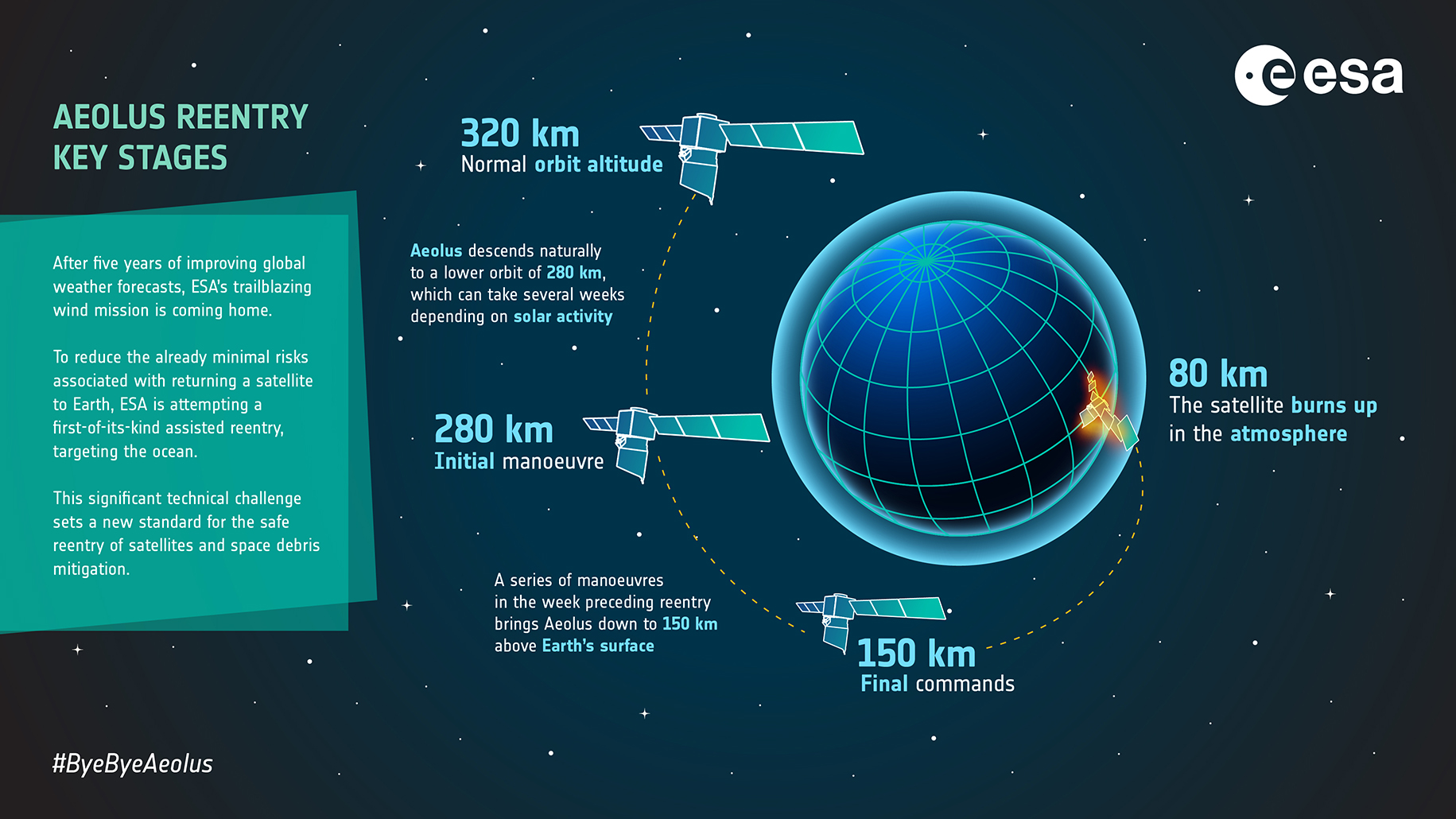
Operators at ESA mission control in Germany have been keeping a close eye on Aeolus. As soon as it reaches 280 km on Monday 24 July, using the last of Aeolus’ fuel, the first of several critical manoeuvres will be performed to steer ESA’s wind satellite slowly back to Earth.
The final manoeuvre is scheduled for Friday 28 July, when a final command will guide Aeolus home from an altitude of 150 km to just 120 km. Then, the satellite will reenter.
At around 80 km, most of the satellite will burn up, but a few fragments may reach Earth’s surface.
Aeolus returns: why?
Having exceeded its planned life in orbit, the 1360-kg Aeolus satellite is running out of fuel. Having ensured that enough fuel remains for a few final manoeuvres, ESA’s spacecraft operators will bring Aeolus back towards our planet’s atmosphere for its inevitable demise.

They will aim the mission towards the ocean, further reducing the very small chance that fragments could cause harm should any reach Earth’s surface.
If successful, the assisted reentry makes the already very small risk to life from these fragments 42 times smaller.
(The general risk from reentering satellites is already very low. For example, the risk of an individual being hit by a piece of space debris is approximately three times lower than the risk from a falling meteorite.)
This is the first assisted reentry of its kind and sets a precedent for a responsible approach to reduce the ever-increasing problem of space debris and uncontrolled reentries.
Get more information, here.

Discussion: 29 comments
Ta bueno. Puxa Asturies.
ta perbien. Puxa Asturies y tal y tal
Why not research refuelling options for satellites?
We’re doing just that. ‘In-Orbit Servicing Vehicles’ are in development, extending the life or functionalities of spacecraft already in orbit, to be launched as early as 2028. Find out more: https://www.esa.int/Enabling_Support/Preparing_for_the_Future/Discovery_and_Preparation/ESA_moves_ahead_with_In-Orbit_Servicing_missions2
Thank you for describing what is likely to happen in the following days and your successful completion of stage 1 re-entry.
Lo ideal sería frenar el satélite antes de que ingrese a la atmósfera, y hacerlo planear entre las capas para evitar que se incendie
I’m holding my breath and keeping fingers crossed 🙂
Thank you so much
Hermanvdb
B3390 Houwaart
A very important and tricky piece of orbital “housekeeping” Thankyou and good luck!
This is awesome news, indeed.
Aeolus is the project that has changed we do weather predictions . It has been on honor to be part of it.
Quite challenging for us to track it on a very low altitude ~260km, take a look:
https://twitter.com/sybilla_tech/status/1684602816399106048
A great parting shot – thank you!
Very useful bravo
Mixed emotions, having done some SWPA work at Airbus before its launch. Proud to have made a contribution, proud to see it pioneering in its final throes, sad it will cease its highly valuable functions. Very mixed emotions indeed.
Thanks for your comment, and work on the mission! Very similar sentiments in the Control Room and across the mission project. It’s bittersweet…
Thanks for the updates and good luck with the re-entry! Good to see that Aeolus is taken down after a successful mission!
It is good to see the Main Control Room, etc. that I helped to design in the 1970s.
Lovely to hear from you! (Bettina says hello 😉 )
So, when/where do I point my telescope to see the reentry burn? (Orlando, FL)
I have a radio meteor scatter record corresponding to two extraordinarily strong and long-lasting consecutive echoes between 14.53.50 and 14.54.08 local time (19.53.50-19.54.08 CEST) over Buenos Aires, Argentina. Is it possible that they are related to the Aeolus reentry? I have the spectrogram available if you are interested
Aeolus’s reentry has now been pinned down to about 21:00 CEST above Antarctica, so it seems this would be from a different event. Sounds intriguing though!
Good to know. Looks like most of us in the world will miss this re-entry like other “spacecraft returns”. Perhaps some penguins will be amused! Keep up the good work in all you do. We the good people of the world appreciate all of the efforts of the EESA, and space travel in general.
Kann es sein das schon am 28.07.2023 ca. 22:50 ein Teil sichtbar aus Niederösterreich Richtung Großbritannien verglüht ist?
Thanks for your comment! The timing and location don’t match Aeolus in this case – you could have seen a meteor or even a different object reentering. This happens roughly once a week.
You can search the International Meteor Network to see if your sighting matches with any others: https://fireballs.imo.net/members/imo_view/browse_events
This may be, Adrian ! This is one hour before touch down. aeolus was already in dense ionosphere at around 7.8 km/s, probably generating a cloud of plasma. You might have heard it ! I have tried to find where aeolus was at this time, if it was close to visible to you … and failed.
Thank you very much for the attempt Giles and sorry for the delay in responding. Perhaps they were some detached fragments that re-entered in the previous orbit. They could also be delta aquarid meteors, but I have never seen such intense and long-lasting echoes in this shower.
Congratulations to the whole Team! A great job of the ESA again!
By the way, do you know why Aeolus can still be tracked on n2yo.com? At UTC 14:07, altitude 4,71 km, flying over Canada?
We just checked now, and its no longer there – perhaps a ghost in the machine 😉
(We think probably the site was still showing Aeolus’s projected future orbit for a little bit)